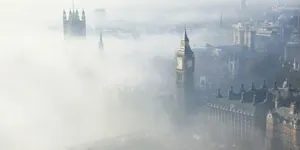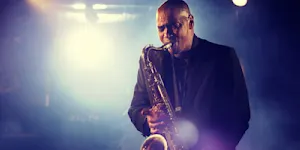What Makes This Word Tick
"Oblique" adds a sense of intrigue to any conversation. It suggests a world of subtlety and indirectness, where things aren't quite as they seem. Whether describing an angle that refuses to conform to right angles or hinting at indirect communication, "oblique" offers a playful dash of complexity that keeps things interesting.
If Oblique Were a Person…
Picture an enigmatic artist, always leaving their canvases unfinished. This person revels in ambiguity and thrives in the gray areas of life. You never quite know what they're thinking, but their cunning eyes and enigmatic smile keep you fascinated and wanting more.
How This Word Has Changed Over Time
Once strictly a term for geometry, "oblique" has wandered into new territories. It now dances its way through language, touching on the art of subtlety in communication and describing things that are indirect or evasive.
Old Sayings and Proverbs That Use Oblique
While not showing up often in traditional proverbs, "oblique" embodies the spirit of phrases like "reading between the lines," where the meaning is hidden and requires a tad more thought.
Surprising Facts About Oblique
Did you know the military uses "oblique" to describe a specific way of marching diagonally, rather than straightforward or sideways? This tactical twist adds a layer to its otherwise nonchalant persona.
Out and About With This Word
In the world of fitness, an entire set of muscles bears the name "oblique." These muscles keep things twisted and are key players when you laugh, love, or just lean over to tie your shoes.
Pop Culture Moments Where Oblique Was Used
Oblique strategies, a set of cards created by musician Brian Eno and artist Peter Schmidt, invite creators to embrace ambiguity in their work. Think of it as a guide to sidestep creative blocks by taking oblique approaches.
The Word in Literature
In the hands of a skilled writer, "oblique" can pepper a story with nuance. It's a literary passport to mystery novels, where essential clues are often served up in a vague, indirect fashion, enticing the reader to unravel the truth.
Moments in History with Oblique
In the baroque era, artists like Caravaggio loved using oblique angles to dramatize their paintings. These unconventional angles added emotion and energy to their masterpieces, drawing viewers into the scene.
This Word Around the World
Around the globe, languages have their twists on "oblique." In French, "oblique" carries the same air of indirectness. Meanwhile, in Japanese art, asymmetry and obliquity are revered as part of the wabi-sabi aesthetic.
Where Does It Come From?
"Oblique" finds its roots in the Latin word "obliquus," meaning slanting. This lineage reveals its geometric beginnings, while its evolution mirrors humanity's love affair with complexity and hidden meanings.
How People Misuse This Word
Many mistake "oblique" for "obtuse," especially when describing people's behavior. But remember, while "oblique" hints at subtlety, "obtuse" implies dullness—quite a difference indeed.
Words It’s Often Confused With
Obtuse: Often mixed up due to its geometric counterpart, "obtuse" generally means slower on the uptake—far less about subtle complexity.
Indirect: Shares similarities, but "oblique" carries more of an artistic flair and nuance.
Vague: While similar, "vague" lacks the mysterious charm and subtle edge that "oblique" embodies.
Additional Synonyms and Antonyms
Synonyms include "slanted," "angular," and "indirect," each bringing its flavor of slant. An antonym might be "straight," serving up clarity in stark contrast to obliquity's complexity.
Want to Try It Out in a Sentence?
Next time you're admiring an abstract painting, ponder this: "The artist's use of oblique lines invites the viewer into a realm of mystery and interpretation."
















